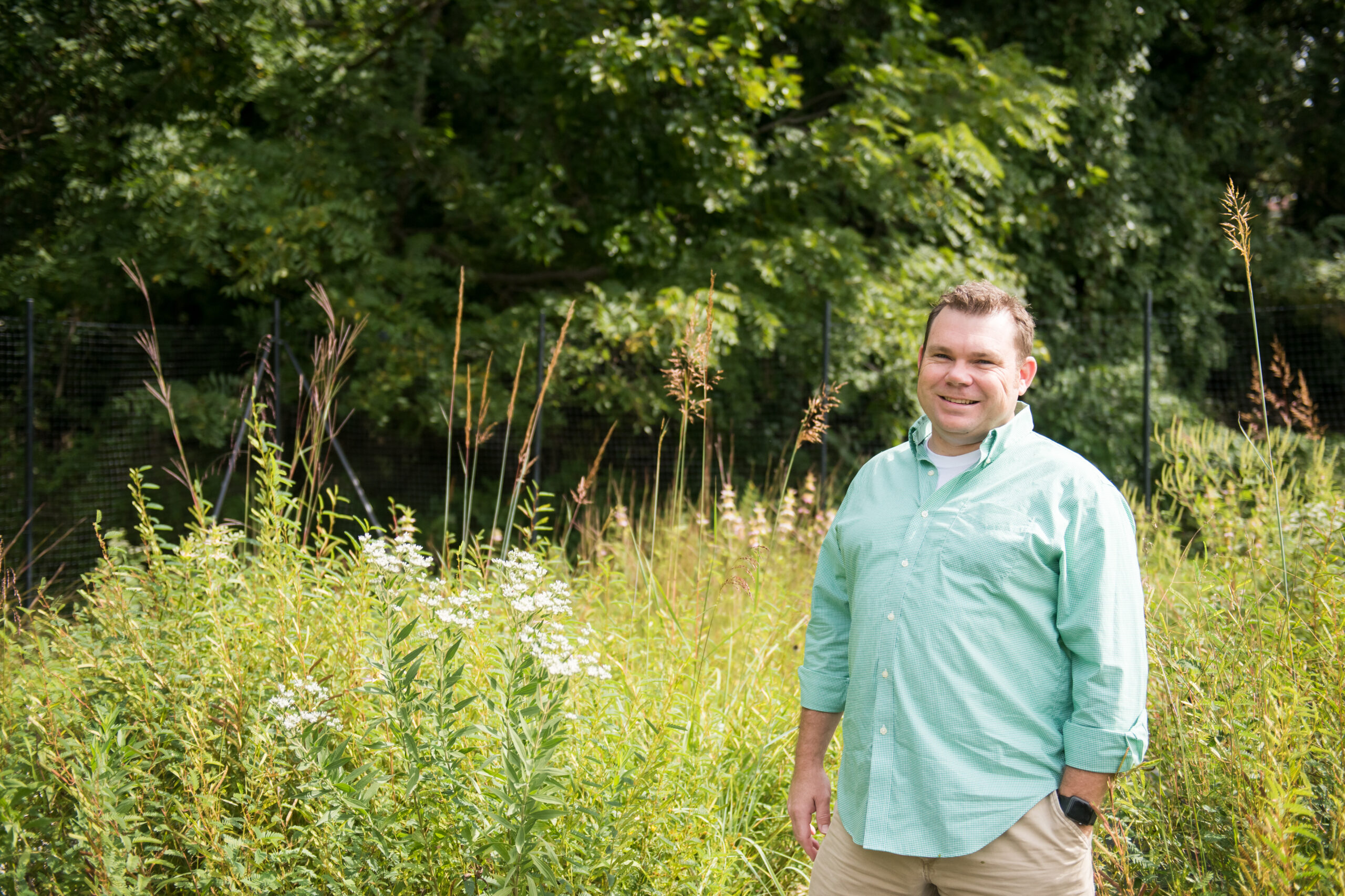Baltimore, like many large U.S. cities, struggles to manage thousands of vacant lots. Most of these lots consist of a thin layer of nutrient-poor soil over demolition debris, with hardy grasses poking up here and there, but UMBC’s Chris Swan, professor of geography and environmental systems, is working to break this mold.
Swan and his collaborators have planted native wildflower seeds in dozens of vacant Baltimore lots since 2014, and now more than 50 percent of the plants in those plots are native species like black-eyed Susans and purple coneflowers. A new article in The Atlantic discusses the promise and challenges of Swan’s ambitious project.
Swan’s work is part of the Baltimore Ecosystem Study, launched in 1997, and lies at the intersection of the natural and social sciences. He is scientifically investigating which native plants survive best and absorb the most pollutants in abandoned urban lots while simultaneously navigating neighbors’ reactions and city policies. “Science is hard, but this”—managing competing interests and expectations—“is really, really hard,” Swan says.
As The Atlantic describes, there have been setbacks, such as the day some of his plots were unceremoniously mowed in preparation for a neighborhood visit from the mayor. Still, Swan is excited by how much the project has grown over the past few years, and his early findings. Eventually, he hopes to discover a Goldilocks concoction of plants that tolerate the poor soil, attract native pollinators, and reduce runoff of contaminant-laced water into the Chesapeake Bay.
To find the magical combination, twice a year Swan and his team collect tens of thousands of measurements from the plots. “The data collection is enormous,” Swan tells The Atlantic, and it’s only going to increase heading into the summer, as Swan begins using drones to collect even more data about plant growth.
Swan intends to continue the project for five to 10 more years, but recognizes that the ultimate goal is not to turn the city into a wildflower meadow—it’s to reinvigorate neighborhoods that have a high proportion of vacant land. That means that while some plots might thrive with plant life for years, others might be developed, based on local needs and investments.
Even though the challenges are significant and the plots aren’t permanent, Swan is dedicated to helping the city make incremental improvements, and to moving forward the conversation about urban ecology in Baltimore. “The idea is to take a problem that is huge,” he tells The Atlantic, “and try and work toward a way of managing that space that’s better than it is now.” For now, he’s gratified to hear neighbors share their delight at spotting new birds and lightning bugs in the area, attracted by his team’s wildflowers.
Read the entire article in The Atlantic, “The ecologists turning vacant lots into labs.”
Image: Chris Swan. Photo by Marlayna Demond ’11 for UMBC.

